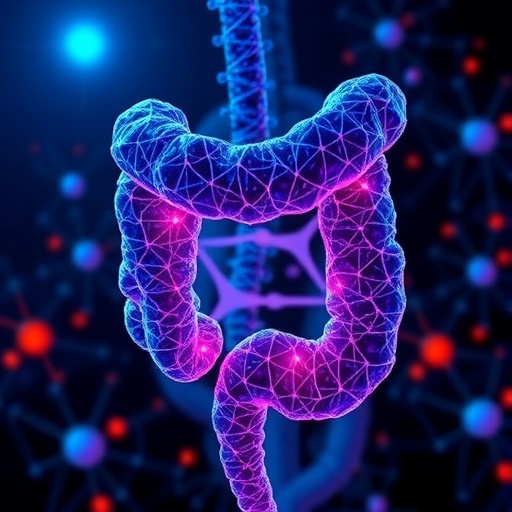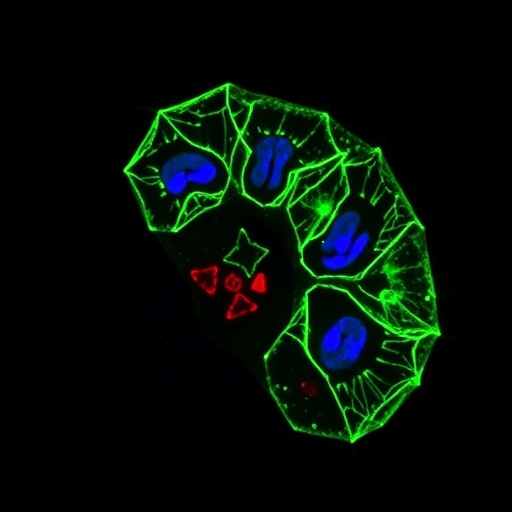
In a groundbreaking study poised to reshape our understanding of cancer metabolism, researchers have leveraged cutting-edge machine learning to uncover previously unappreciated heterogeneity in glycolysis within colorectal cancer (CRC). This pioneering work, recently published in Medical Oncology, integrates bulk and single-cell RNA sequencing (RNA-seq) data, revealing critical insights into how cancer cells adapt their metabolic programs to thrive in diverse tumor microenvironments. The findings not only challenge longstanding assumptions about uniform metabolic behavior in tumors but hold substantial promise for tailoring more effective, metabolism-targeted therapies in colorectal cancer.
Colorectal cancer remains one of the leading causes of cancer-related mortality worldwide, and despite advances in treatment, therapeutic resistance and tumor recurrence are persistent challenges. Metabolic adaptation, especially the Warburg effect—where cancer cells preferentially employ glycolysis over oxidative phosphorylation even in oxygen-rich conditions—has long been recognized as a cancer hallmark. However, the extent to which this metabolic reprogramming varies among individual tumor cells within the same tumor has been unclear. This study breaks new ground by applying sophisticated machine learning algorithms to dissect bulk RNA-seq data alongside single-cell transcriptomics, enabling an unprecedented resolution of glycolytic activity at the cellular level.
The investigation was spearheaded by Du, Y., Miao, Z., Li, P., and collaborators, who curated a comprehensive dataset from colorectal cancer specimens, integrating bulk tissue RNA-seq profiles with thousands of single-cell RNA-seq profiles. Employing advanced unsupervised and supervised learning approaches, the team constructed models capable of deconvoluting the complex transcriptional landscapes associated with glycolytic pathways. Their analysis distinguished distinct subpopulations of cancer cells exhibiting varying levels of glycolytic gene expression, indicating metabolic heterogeneity that had previously been obscured by bulk averaging techniques.
One of the most striking revelations from the study was the identification of diverse glycolytic phenotypes co-existing within single tumors. Some cancer cells demonstrated a pronounced glycolytic signature, heavily relying on anaerobic glucose metabolism, while others exhibited a comparatively oxidative or intermediary metabolic profile. This metabolic mosaicism suggests that colorectal tumors are not metabolically homogenous masses but rather complex ecosystems where cancer cells exploit different energy production strategies, possibly in response to spatial and microenvironmental cues such as oxygen availability, nutrient gradients, and stromal interactions.
Such heterogeneity has profound implications. It may underlie intratumoral differences in growth rates, invasiveness, and response to therapies. Highly glycolytic cells often exhibit aggressive phenotypes and resistance to treatment, partly due to the acidic microenvironment their metabolism generates. Conversely, less glycolytic cells might be more susceptible to metabolic inhibition but could serve as a reservoir for tumor relapse. By mapping these metabolic states at single-cell resolution, the study paves the way for interventions that target specific metabolic subpopulations, potentially preventing therapeutic escape.
The methodological sophistication in this work is noteworthy. Integration of bulk and single-cell RNA-seq data is nontrivial, given that bulk data represent averaged signals over heterogeneous mixtures, whereas single-cell data introduce substantial noise and dropout effects. To surmount these challenges, the researchers developed machine learning frameworks that perform data imputation, dimension reduction, and feature extraction. The process involved training models that could predict glycolytic activity markers robustly, even in the presence of noisy or sparse single-cell data, thereby enabling high-confidence inferences about metabolic states.
Beyond the immediate findings, this study exemplifies the transformative power of artificial intelligence in oncology research. The use of machine learning to synthesize multi-omic, multi-scale data sets signals a future where complex biological phenomena can be unraveled with finesse previously unattainable. Moreover, the approach is broadly applicable beyond colorectal cancer, offering a template for dissecting metabolic heterogeneity in other malignancies or even non-neoplastic diseases where cellular metabolism plays a critical role.
The implications for clinical oncology are equally exciting. Metabolic profiling at single-cell resolution could inform precision medicine strategies where glycolytic inhibitors or metabolic modulators are deployed in combinatorial regimens targeting specific tumor cell subpopulations. Considering the plasticity and adaptability of cancer metabolism, such nuanced interventions might be necessary to outmaneuver tumor evolution and improve patient outcomes. Additionally, the identification of metabolic biomarkers from this integrated analysis holds promise for prognostic assessment and monitoring therapeutic responses.
This study also prompts critical reconsideration of cancer metabolism models gleaned from bulk assays. It underscores the peril of oversimplification when treating tumors as monolithic entities and highlights the heterogeneity that can impact drug resistance and disease progression. By revealing how glycolytic activity varies not only between tumors but within them at the single-cell level, the research challenges researchers and clinicians to develop more personalized and dynamic approaches for metabolic targeting.
From a biological standpoint, this investigation raises intriguing questions about the drivers of metabolic heterogeneity in colorectal cancer. Are these differences genetically encoded, epigenetically regulated, or primarily shaped by microenvironmental factors? Do distinct glycolytic subsets have unique contributions to metastasis, immune evasion, or interaction with the stromal compartment? Future studies building on this foundation will be critical to dissect these mechanisms and validate potential therapeutic targets.
Furthermore, this research highlights the significance of integrating bulk and single-cell data rather than relying on one modality alone. While bulk RNA-seq provides robust, comprehensive transcriptomic snapshots, its averaging nature obscures cellular diversity. Conversely, single-cell RNA-seq grants cellular granularity but is limited by technical noise and coverage issues. The intelligent fusion of these complementary data types, empowered by machine learning, optimizes strengths and compensates for weaknesses, producing more holistic and accurate biological models.
The study’s results also herald advances in computational biology and high-throughput sequencing technologies. The ability to process and interpret vast datasets with machine learning algorithms opens avenues for continuous integration of new datasets, longitudinal studies tracking metabolic shifts during treatment, and real-time decision-making in oncology clinics armed with digital pathology and molecular diagnostics.
In conclusion, this landmark study by Du and colleagues stands as a testament to the convergence of computational innovation and cancer biology. By illuminating glycolytic heterogeneity in colorectal cancer through the integration of bulk and single-cell RNA-sequencing data via machine learning, the research charts a new path toward dissecting tumor metabolism at unprecedented resolution. This work has far-reaching potential to deepen our biological understanding, refine therapeutic strategies, and ultimately make a tangible difference for patients battling colorectal cancer around the globe.
Subject of Research: Glycolytic heterogeneity in colorectal cancer uncovered through machine learning integration of bulk and single-cell RNA sequencing data.
Article Title: Machine learning integration of bulk and single-cell RNA-seq data reveals glycolytic heterogeneity in colorectal cancer.
Article References:
Du, Y., Miao, Z., Li, P. et al. Machine learning integration of bulk and single-cell RNA-seq data reveals glycolytic heterogeneity in colorectal cancer. Med Oncol 42, 458 (2025). https://doi.org/10.1007/s12032-025-03007-6
Image Credits: AI Generated
Tags: AI in cancer researchcolorectal cancer mortality ratesglycolytic diversity in colorectal cancermachine learning in oncologymetabolic adaptation in cancermetabolic reprogramming in tumorsmetabolism-targeted therapiesRNA-seq data analysis in cancersingle-cell RNA sequencing applicationstherapeutic resistance in colorectal cancertumor microenvironment and metabolismWarburg effect in colorectal cancer




